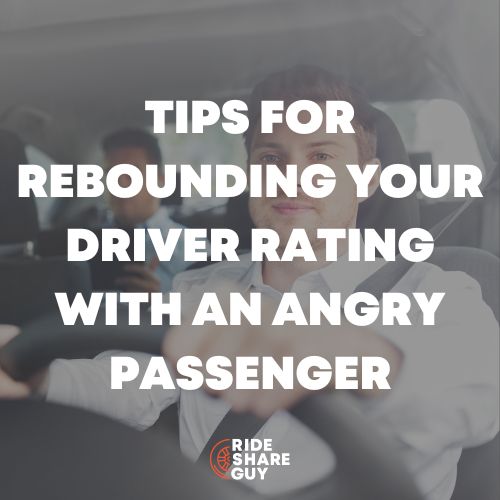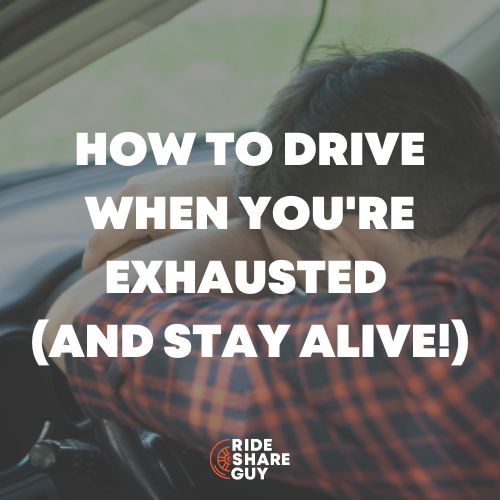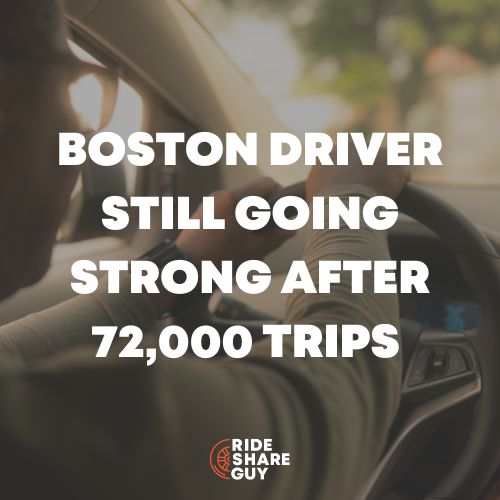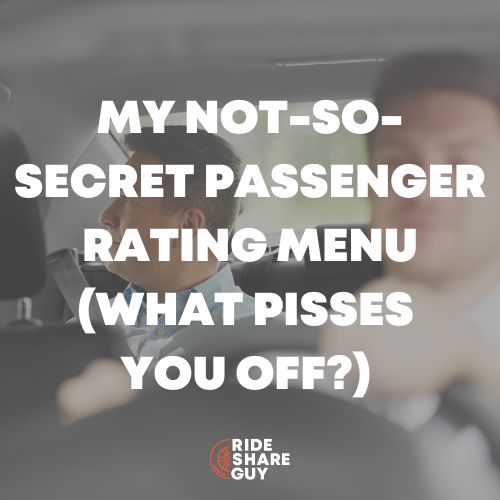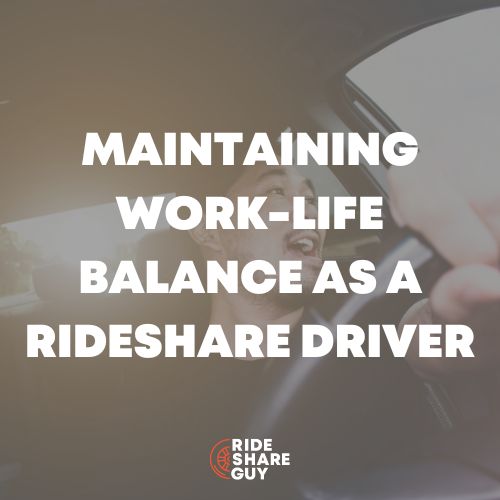The heat is on! As more and more people start driving for Uber and Lyft, more and more people are angry and protesting.
- Drivers rallied outside of Uber’s headquarters in San Francisco
- Drivers held a protest outside of an Uber hub in Chicago
- Drivers went on strike outside of a Taylor Swift concert in Florida
What are drivers so angry about? And more importantly, what do they hope to accomplish to improve their work lives?
In this article, I will lay out the major complaints, the proposed solutions, and my opinion about whether any protests will make a real difference.
Background
I am a driver and honestly have driven more than most. With 29,241 rides, I have experienced everything those protesting drivers have experienced.
My biggest complaint has been the reduction in pay. I knew what it meant to be an independent contractor when I signed up with Uber and Lyft.
It meant: I do the work, and you pay me what I charge. However, in the case of Uber and Lyft, they had set the payouts ahead of time. Therefore, I agreed to work for the amount of money they provided.
In the beginning, the wage was fair. To be clear, I never expected sick leave, vacation pay, or expense reimbursement, that was never a part of the deal. As an Independent Contractor, I would handle those issues.
I work, you pay me, it’s that simple.
What Drivers Are Angry & Protesting About
1. Reduced Revenue
Where I started to get angry was when the pay structure was not only reduced but it was also changed.
In fact, there have been several changes:
- First pay structure: 80% of passengers’ fare
- Second pay structure: Time and distance. I was no longer getting a percentage of the passenger’s fare. This would allow Uber and Lyft to charge higher fares without paying me more.
- Third pay structure (current): Black box algorithm upfront payouts. Each ride has a personalized payout presented to the driver before acceptance. The driver can accept or decline based on profitability.
In 2016-2019 I could work full-time in San Francisco and made over $2,000 a week.
In 2023, I would have to work many more hours to make that amount. This is what most drivers are angry about. The rules of the business keep changing.
A true independent contractor can set their own prices. Clearly, that is not the case with Uber and Lyft. They have full control of the prices and are doing everything they can to pay drivers as little as possible to achieve profitability.
It should be noted here that neither Uber nor Lyft are profitable. They have reduced their losses, but neither is truly profitable yet.
2. Employee Benefits
Since it is now clear that Uber and Lyft have exerted more control over drivers than they would with a pure Independent Contractor, many drivers feel entitled to employee benefits.
That is the trade-off. Independent Contractors get their money and handle everything else.
Employees give up much more of their autonomy in exchange for benefits such as expense reimbursement, sick leave, vacation time, and guaranteed minimum wage.
3. Unfair Deactivation
This is another issue that has many drivers angry and upset. I experienced my own brand of rage when Uber deactivated me for six weeks. It was a technical error. Uber compensated me with $1,000 for my troubles.
Lyft was my primary source of revenue at that time in my career, so I drove 100% for Lyft during that time. However, feeling wrongly deactivated and unable to learn why I was deactivated was very frustrating.
This issue also has a racial component, as people of color are unfairly deactivated far more than Caucasians.
Drivers demand these deactivations be treated more seriously and resolved far more quickly.
Uber and Lyft’s Argument
Both companies want to maintain the Independent Contractor status, period. They do not want to provide these ancillary benefits to avoid additional expenses.
Uber and Lyft claim that to provide these benefits to drivers, the passenger fares would have to increase so much that many passengers would stop using the service.
This would reduce demand, and drivers would not make as much money because there would not be as many rides to work.
This argument makes sense. Since Uber and Lyft are not profitable, where will the money come from?
But What About Washington States Success?
The city of Seattle and then the entire state of Washington has enacted laws that provide drivers with a guaranteed rate using the time and distance model.
On April 5, 2022, we reported the results:
Drivers across the Northwestern state will earn a minimum of $1.17 per mile and 34 cents per minute with a minimum pay of $3.00 per trip. In July 2024, the state will initiate paid family and medical leave on top of established protections against unjustified deactivation, worker’s compensation insurance, and paid sick time. More states are trying to secure these same benefits for their constituents.
Who Pays For Washington?
The passenger rates have not increased drastically in Washington, so who is paying for the high rates?
The passengers are picking up some of the increase. However, in addition, I suggest that I am, me and all the drivers who are not in Washington.
I am getting paid through an algorithm, clearly, most of us who are not in Washington are getting paid less.
Therefore, I don’t see how the Washington model can work nationwide. Eventually, someone has to pay for higher rates.
If it is, in fact, the passengers, then demand will certainly decrease, and net revenue (higher rates, lower demand) for drivers will stay about the same.
If You Don’t Like It, Quit!
According to Investopedia:
“In a free market, nobody is forced to do anything, and transactions are entered into voluntarily. Economists theorize that free markets, through the price mechanism, competition, and the forces of supply and demand, are able to most efficiently allocate goods and capital to where they are most productive.”
Recently, I was talking on the SMTMC YouTube show. I said that nobody is forcing anybody to work for Uber and Lyft. If you don’t like it, then you can quit and do something else. Nobody is forced to do anything. While I can get angry and want things to be better, I always have the choice to do something else I deem to be better.
On the other hand, when I started with Uber and Lyft, I agreed to the pay structure at the time. Then Uber and Lyft completely changed the game’s rules, paying me less and withholding more information.
Now I am in the game, committed to this profession, and I don’t want to find something else. Now I protest to get things back to where they were.
I see both sides.
Can Uber and Lyft Keep Raising Prices?
According to Forbes:
“While Uber’s price escalation succeeded in boosting its mobility revenue – ridesharing demand is inelastic, at least at historical price levels — it also depressed consumer demand growth. According to tracking data from YipitData, Uber’s number of US ride-hail trips in Q3 2022 decreased 29% from pre-pandemic Q3 2019 levels, offset by the price hike of 41% over the same period. In essence, Uber has traded off decreased ride-hail demand (as measured by number of trips) in exchange for increased revenue and profitability.”
Key Takeaways
This is a challenging time for rideshare drivers. In this country, we have the “haves” and “have-nots”.
Washington is the haves, and little ole Jay in Sacramento is the “have-nots.”
It’s still enough to enjoy my weekend driving and earn $700. It pays for my car and a few other things. And yet, it would be great if I could get Washington state’s fat rates. Then I would be a have.
However, there will always be the have-nots. Until we develop a system that pays everyone equally, which Uber and Lyft can afford and still be profitable, we will have protests and angry drivers.
Labor versus management, it’s nothing new. My philosophy is to drive to the best of my ability, make as much as possible with the current structure, and enjoy my life.
Be safe out there.
